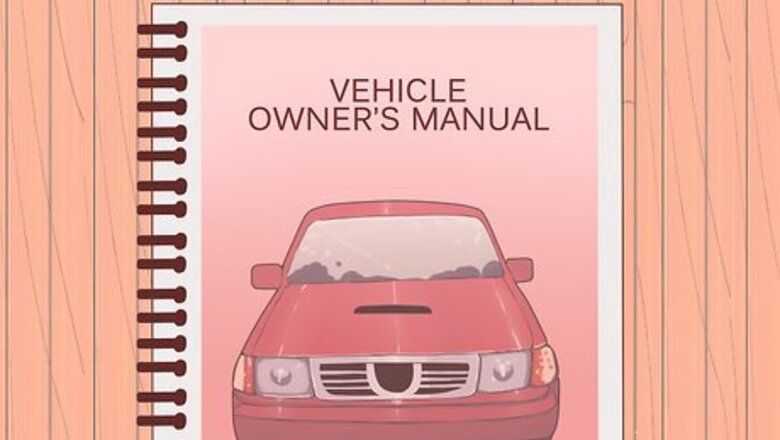
views
Maximizing Your Car’s Performance
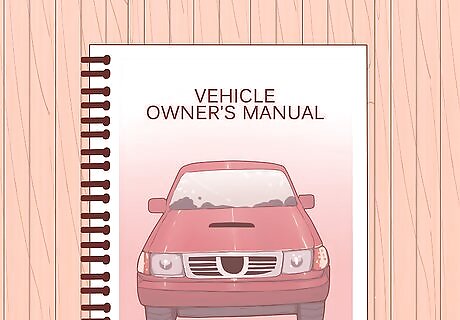
Properly maintain your vehicle. Although it’s often overlooked as a way to pull additional horsepower from your motor, properly maintaining your vehicle is essential to producing as much power as possible. Refer to your vehicle’s owner’s manual for recommended service intervals and ensure your adhere to them. Make sure to change your oil every 3,000 miles or at your vehicle’s recommend intervals. Replace your air and fuel filters periodically to ensure the unimpeded flow of air and fuel into the engine. EXPERT TIP Tom Eisenberg Tom Eisenberg Auto Technician Tom Eisenberg is the Owner and General Manager of West Coast Tires & Service in Los Angeles, California, a family-owned AAA-approved and certified auto shop. Tom has over 10 years of experience in the auto industry. Modern Tire Dealer Magazine voted his shop one of the Best 10 Operations in the Country. Tom Eisenberg Tom Eisenberg Auto Technician What Our Expert Does: "The type of vehicle you have and its model year may change how often you need to take your car in to get serviced. I recommend every 3,500 to 5,000 miles for most cars, but some newer models can be 7,500 to 10,000 miles. That being said, if you are worried about anything, you should take your car in as soon as possible."
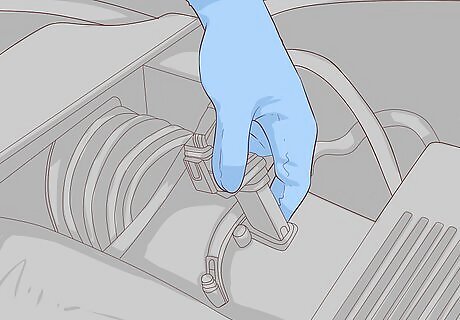
Install a cold air intake. The four-cylinder engine in your vehicle is powered by compressing a mixture of air and fuel and igniting it. Because the level of compression your engine will produce is a constant (determined by the piston throw) you can produce more power by allowing for the flow of more air and fuel into the engine itself. To install a new intake, remove the stock intake tube and air box surrounding the air filter and replace it with an aftermarket one designed to increase the amount of air that passes into the engine. Most aftermarket cold air intakes come with a cone shaped filter that more efficiently pulls air from the atmosphere. Increasing the amount of air flow into your engine can also improve gas mileage. Many aftermarket intakes produce more noise than their stock counterparts.

Improve your vehicle’s exhaust flow. As your engine ignites the mixture of air and fuel, it pushes the piston downward. The exhaust produced from this explosion must be evacuated from the cylinder chamber before more air and fuel can be injected. Replacing portions of your exhaust with larger diameter pipes will reduce the backpressure limiting the speed the exhaust may exit the engine. You may choose to replace the piping from the catalytic converter back (referred to as a “cat-back” exhaust) or all of the piping leading to the exhaust manifold. Kits can be purchased to replace however much of your vehicle’s exhaust system you may choose. Forced induction applications like turbocharged vehicles will gain even more power from installing a higher flowing exhaust than a normally aspirated engine will.
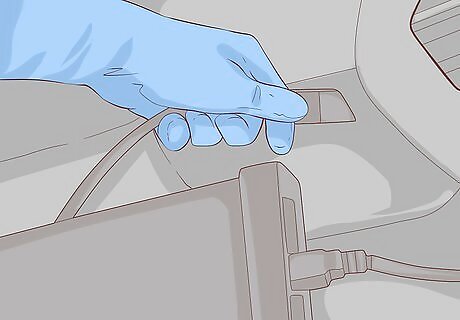
Have your vehicle’s computer reprogrammed. In most modern vehicles, a computer controls a number of variables that affect how the engine runs. These computers are programmed from the factory to balance efficiency, emissions, reliability, power output and gas mileage. Reprogramming the computer to prioritize power can often free up horsepower without installing any new components. Search for companies that offer replacement computers for your specific vehicle online. You can either purchase a replacement or send yours out to be reprogrammed. Many companies sell programmers you can plug into the OBDII port of your vehicle to change the code in the computer you have.
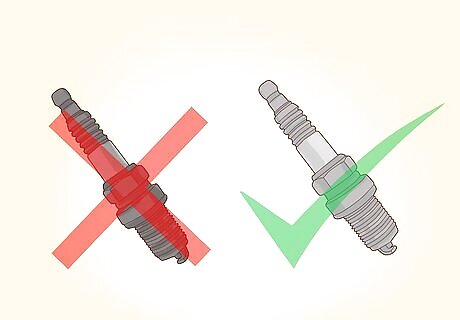
Swap out ignition components. For an engine to function properly, it needs air, fuel and a spark to ignite the mix. Old spark plugs and worn out spark plug wires can prevent your ignition system from adequately detonating the air/fuel mixture. Your ignition components are often rated to be good for up to 100,000 miles, but replacing them with specialized aftermarket components can result in a more complete burn of air and fuel. The more air and fuel your engine burns, the more power it produces. Worn out spark plugs can even fail to ignite at all, resulting in a misfire. Larger diameter or more conductive ignition wires can reduce the time it takes for the spark to reach the mixture.
Replacing Engine Components for More Power
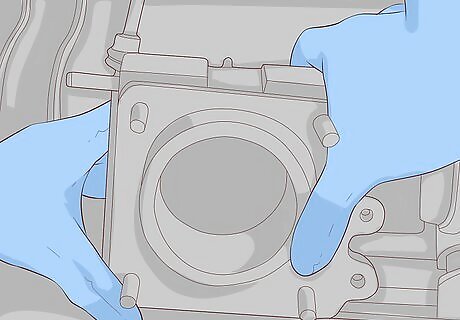
Install a new throttle body. The throttle body is the point that your intake meets the engine and the air is funneled into the intake manifold. In many applications, installing a throttle body with a larger diameter will allow even more air to flow into the engine, resulting in an increase of power. Throttle bodies are often held in place with four bolts and will require a new gasket to be placed between the throttle body and intake manifold when installed. Throttle body diameter is usually measured in millimeters. Swapping a 65 millimeter throttle body for a 75 millimeter one can dramatically increase the air that flows into the engine. You can purchase throttle bodies with larger diameters at many auto parts stores or online performance marketplaces. Make sure to purchase a throttle body designed for your specific year, make and model of vehicle.
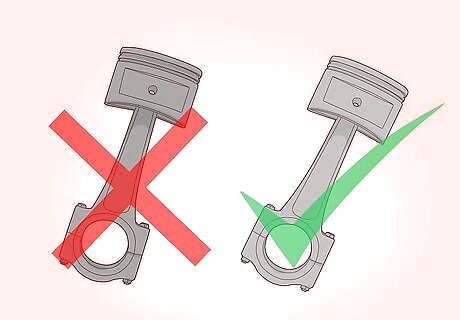
Swap out your pistons for a higher compression ratio. Replacing the pistons in your engine is a significant project, but the resulting horsepower increase can be equally as significant. In many vehicles, you will need to remove the entire engine to replace the pistons, but in some you can actually remove the oil pan and crank shaft, followed by the piston rods and pistons. If installing forced induction like a turbocharger or supercharger, you should choose pistons made of forged steel as opposed to the more common cast steel. Forged steel can withstand higher pressures and temperatures. There are a number of steps involved in replacing pistons, many of which are best left to professionals.
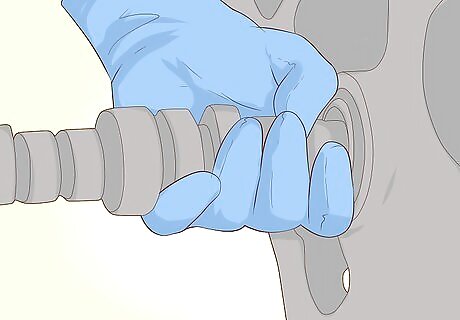
Install more aggressive camshafts. The camshaft or shafts in your engine have the important task of opening and closing the intake and exhaust valves that allow the air and fuel to enter the engine and the exhaust to exit it at just the right time. Stock camshafts are designed with a combination of efficiency, power, fuel economy and emissions in mind, but replacing them with more specialized ones can dramatically increase the power output of the engine. Many modern vehicles come equipped with variable cam timing (such as Honda’s V-Tech), but even these cam shafts can be replaced for more specialized applications. Pushrod motors have a camshaft located in the engine block, whereas modular motors will have them in the cylinder heads.

Use headers to improve exhaust flow. Just as replacing components of the exhaust system will increase the efficiency of the exhaust exiting the engine, aftermarket exhaust manifolds designed with larger diameter pipes and equal length piping will improve the balance and efficiency of the way exhaust exits your engine. Aftermarket exhaust manifolds are commonly referred to as headers, and can add significant power to your vehicle. In many four-cylinder vehicles, the exhaust manifold is bolted to the cylinder head at the front of the car. Turbochargers are mounted to the exhaust manifold of turbocharged vehicles, and the increased efficiency of headers will have an even more dramatic effect on the power output of such vehicles.
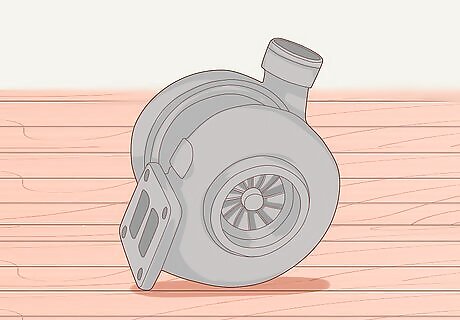
Use a boost controller in turbocharged vehicles. Many four cylinder sports cars now come equipped with turbochargers. These turbochargers produce more pressure than regular atmospheric air can, forcing more air into the engine than would otherwise be possible. Installing an aftermarket boost controller on the vacuum line between the turbocharger and waste gate can allow you to increase the amount of boost the turbocharger produces. Remember that your engine needs to maintain an appropriate air/fuel ratio, so never increase the boost more than your specific vehicle’s fuel system can support. An aftermarket boost gauge can be considered mandatory for this modification to ensure you know exactly how many PSI of boost your vehicle is producing. An air/fuel or exhaust gas temperature gauge can help you ensure you are supporting the increased air flow with enough fuel.
Using Forced Induction
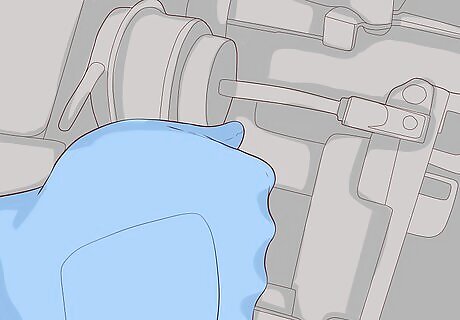
Turbocharge your vehicle. If your vehicle did not come equipped with a turbocharger from the factory, you can install one on a normally aspirated motor to significantly increase power output. A turbocharger uses the exhaust flowing out of the motor to power a turbine fan that forces compressed air into the engine. Turbocharging a vehicle requires a number of supporting modifications to the vehicle’s fuel system. The internal components of your engine, such as pistons and rods, may also need to be replaced to withstand the added stress. Remember that adding forced induction like a turbocharger requires an increase in fuel to support the added air. Kits for your specific vehicle may be available that include all of the components required to turbocharge it.

Supercharge your vehicle. A supercharger works by forcing compressed air into the engine just like a turbocharger does, but it is powered by the serpentine or an accessory belt instead of by the exhaust. Because superchargers are belt driven, they are not as efficient as turbochargers but are favored by those who value power at lower RPMs. Superchargers require supporting fuel modifications just like turbochargers. Supercharger kits often come with a bracket and larger serpentine belt to support the addition of the supercharger pulley. Unlike turbochargers, there is no need to wait for the turbo to spool. Superchargers produce power at all RPMs.

Use a wet or dry nitrous oxide kit. Nitrous oxide contains more oxygen than atmospheric air, so injecting nitrous into your vehicle’s engine works in much the same was as a turbocharger or supercharger. “Wet” nitrous kits inject a combination of nitrous and fuel into the cylinders and can produce more power safely than “dry” kits which inject only nitrous. Most four cylinder motors can withstand up to eighty horsepower worth of nitrous oxide being injected without suffering any adverse effects. Make sure to order a nitrous kit designed for your vehicle if you don’t have the tools or skill set to fabricate the components you need to install the kit. Unlike other forms of forced induction, nitrous oxide only increases wear on the engine while armed.

Have your vehicle professionally tuned. After installing a form of nitrous or forced induction, it’s important to have your vehicle tuned to support the increase in power. Taking your vehicle to a professional tuning shop will allow them to use a dynamometer to test various air/fuel ratios at different RPMs, ensuring the maximum power output at each point in the vehicle’s power band. The price to have your vehicle “dyno-tuned” varies from location to location. Dyno-tuning can free up significant amounts of power from the modifications you’ve already installed.


















Comments
0 comment